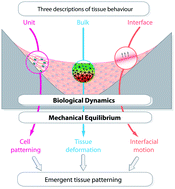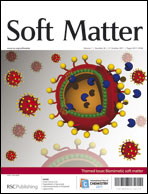The physics of tissue patterning and extracellular matrix organisation: how cells join forces
Abstract
This paper reviews recent literature about the physical processes involved in cell interactions and tissue development. Rather than being exhaustive, we intend to provide illustrative examples of experiments and theoretical approaches into how cells interact with other cells and with substrates to form complex tissues and organs. Forces and geometry efficiently coordinate cell behaviour through feedback and mechanical homeostasis, leading to emergent properties not directly evident from the behaviour of individual cells. Two important examples for such emergent properties are the patterning of growth and differentiation within tissues, and the long-range organisation of the extracellular matrix. Despite the complexity of the biological, chemical and mechanical processes involved, theoretical studies have shown that many of these phenomena can be described quantitatively by simple physical processes, such as surface tension controlled growth. In addition to improving knowledge about the biology of tissues, a thorough theoretical understanding of the self-organising mechanisms used by nature may provide inspiration for the design of self-assembling biomimetic soft materials.

- This article is part of the themed collection: Biomimetic soft matter

 Please wait while we load your content...
Please wait while we load your content...